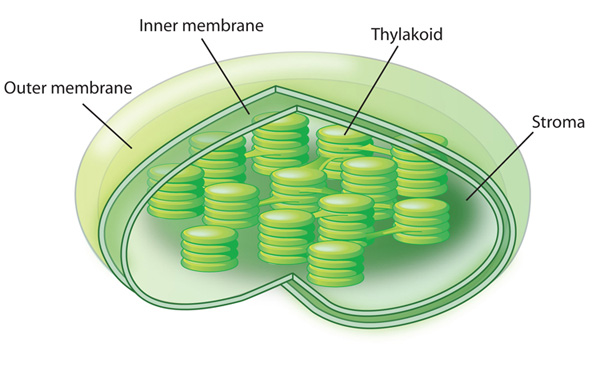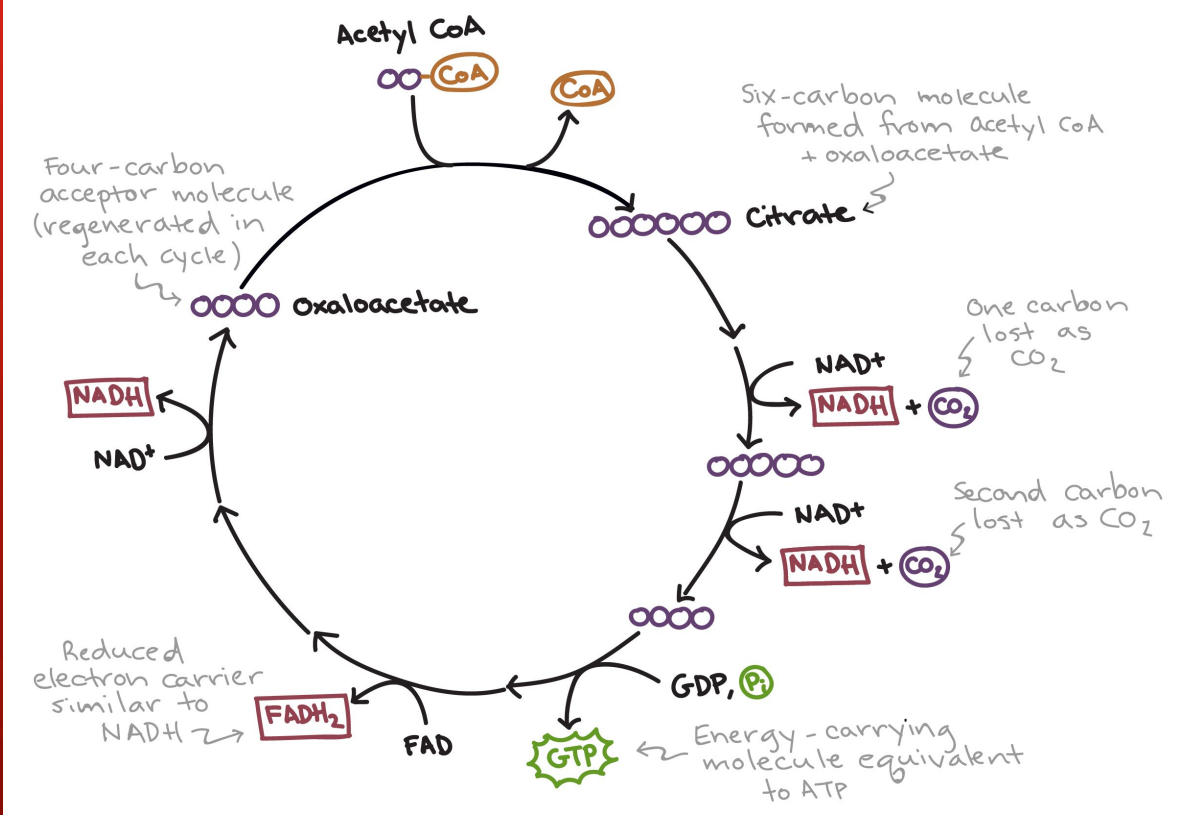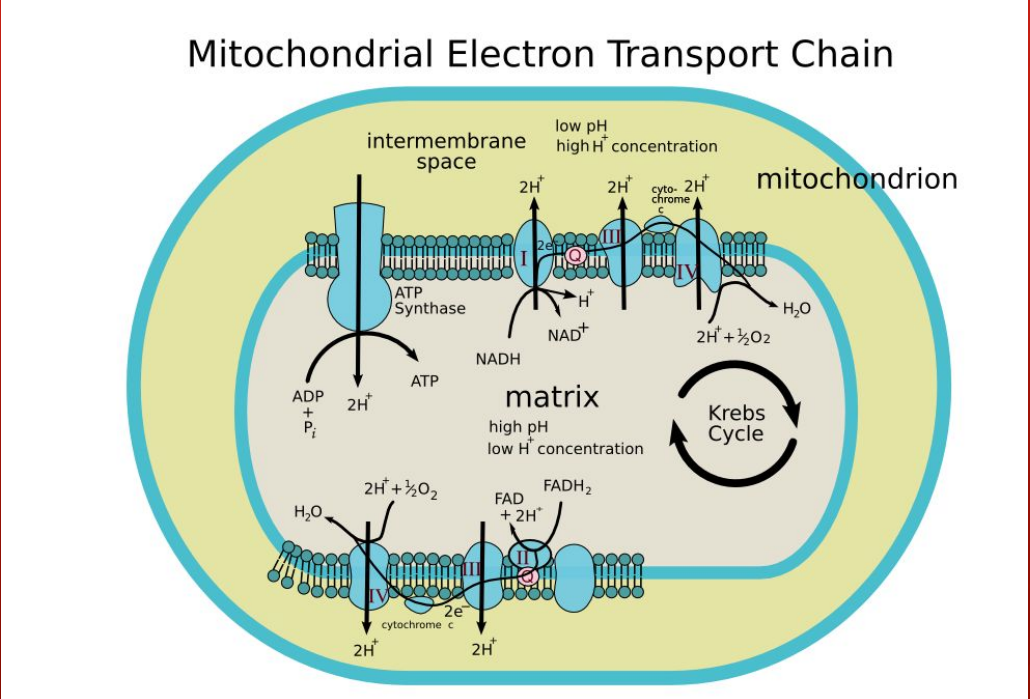Unit 3: Cellular Energetics
Photosynthesis and Respiration Part 1:
Photosynthesis: Obtaining Energy
A. Organisms are classified by the way they get energy.
a. Autotrophs – use energy from the sun or chemicals to make organic compounds
b. Heterotrophs – animals that must get energy from food
II. Photosynthesis Overview
A. Most autotrophs use the process of photosynthesis to convert light energy from the sun into chemical energy in the form of organic compounds, mostly carbohydrates.|
B. Photosynthesis can be divided into two parts:
a. Light-dependent reactions
b. Light Independent reactions- Calvin Cycle
C. Light reactions – Light energy (absorbed from the sun) is converted into chemical energy, which is temporarily stored in ATP and the energy carrier molecule NADPH.
D. The Calvin Cycle – organic compounds are formed using CO2 and the chemical energy stored in ATP and NADPH. Organic compounds or products: Glucose and Oxygen
Photosynthesis chemical equation 6CO2 + 6H2O → C6H12O6 + 6O2
Light Energy III: Capturing Light Energy
A. The first stage of photosynthesis includes light reactions. They require sunlight.
B. Absorption of light occurs in the chloroplasts.
C. Chloroplasts are surrounded by a pair of membranes; the inner membrane contains flattened sacs called thylakoids.
a. Thylakoids stack to form layers called grana.
b. Surrounding the grana is a solution called the stroma. 
IV. Light and Pigments
A. Although light from the sun appears white, it is actually made of various colors called the visible spectrum.
B. A prism can separate these colors and range from red to violet.
C. A pigment is a compound that absorbs specific wavelengths of light, leaving only the others to be reflected back.
a. (ex: a red shirt absorbs all light except red)
V. Chloroplast Pigments
A. The membranes of thylakoids contain pigments, most of which are types of chlorophylls.
B. The most common are chlorophyll A and chlorophyll B.
a. Chlorophyll A absorbs more red light b. chlorophyll B absorbs more blue light.
c. Neither absorbs much green light.
C. Other pigments include the carotenoids that reflect orange, yellow, and brown.
D. Since chlorophylls are more abundant, generally, they mask the other pigments.
E. In many plants, the chlorophylls break down in the fall, revealing the carotenoids.
VI. Converting Light Energy to Chemical Energy
A. When pigments capture light, the energy must be converted into chemical energy (ATP and NADPH).
B. Hundreds of pigments are clustered within proteins. Together, these are called photosystems. C. Two types of photosystems exist:
a. Photosystem I and Photosystem II
VII. Steps of Light Reactions
A. Energy absorbed by the pigments is passed from pigment to pigment until it reaches a pair of chlorophyll A molecules.
Step 1 – light energy forces electrons to enter a higher energy level in the two chlorophyll A molecules of photosystem II. a. These electrons are said to be “excited.” b. They can leave the chlorophyll A molecules.
Step 2 – a molecule in the thylakoid membrane called the primary electron acceptor takes the electrons from the chlorophyll A molecules.
Step 3 – The primary electron acceptor gives electrons to another molecule in the thylakoid membrane, which gives them to another, and another, and so on. a. These molecules are called an electron transport chain. Each time electrons are passed, they lose some energy, which is used to move protons (H+) into the thylakoid.
Step 4 – The electrons finally go to replace the electrons that are leaving another group of pigments in photosystem I. These electrons also move from molecule to molecule in another electron transport chain (ETC).
Step 5 – This chain brings electrons to the side of the thylakoid closest to the stroma, combining with NADP+ and a proton to make NADPH.
VIII. Replacing Electrons
A. Both photosystems would stop if electrons were not replaced.
B. An enzyme beside photosystem II that splits water molecules into electrons, protons & oxygen helps to replace the electrons that left photosystem II.
a. The protons are pushed into the thylakoid, releasing oxygen from the plant.
IX. Making ATP in Light Reactions
A. The whole purpose of the light reactions is to push protons from the stroma to the inside of the thylakoid.
B. This happens each time electrons pass from one molecule to the next.
C. All these protons become highly concentrated inside the thylakoid and want to leave.
D. An enzyme called ATP synthase located in the membrane lets protons escape and uses the energy from them to put together ATP and NADPH molecules.
X. The Calvin Cycle
A. The Calvin Cycle is the second set of reactions in photosynthesis that uses energy from ATP and NADPH during light reactions to produce organic molecules in the form of sugars.
a. Stage 2 of Photosynthesis (a.k.a. the Dark or Light Independent reaction).
XI. Carbon Fixation
A. In the Calvin Cycle, a series of enzyme-assisted reactions produce a 3-carbon sugar.
B. CO2 from the atmosphere is bonded or “fixed” into organic compounds in this process.
C. This process is called carbon fixation.
D. The Calvin Cycle occurs in the stroma of the chloroplasts.
XII. Steps of the Calvin Cycle
Step 1 – CO2 diffuses into the stroma. a. An enzyme combines each CO2 with a 5-carbon molecule called ribulose bisphosphate (RuBP). The resulting 6-carbon molecule is unstable and immediately splits into two 3-carbon molecules called 3-phosphoglycerate (3-PGA).
Step 2 – each 3-PGA is converted into another 3-carbon molecule called glyceraldehyde 3-phosphate (G3P) in a two-part process: 1st, each 3-PGA receives a phosphate from an ATP. This compound receives a proton (H+) from NADPH and releases the phosphate group, producing G3P.
Step 3 – one of the G3P molecules leaves the Calvin cycle and is used to make carbohydrates.
Step 4 – the other G3P molecule is converted back into RuBP a. through the addition of a phosphate from an ATP. This RuBP can be used again in the Calvin cycle.
XIII. Alternative Pathways
A. Although the Calvin cycle is the most common way plants fix carbon, some plants have adapted in other ways.
B. Plants that live in hot/dry climates can open and close their stomata (pores on the underside of a leaf). This helps them keep water in but reduces the amount of CO2 and O2 that enters and leaves the plant. Alternative pathways help them fix this problem.
C. The C4 Pathway – C4 plants partially close their stomata during hot parts of the day.
a. This prevents water from leaving and keeps most CO2 from getting in.
b. C4 plants have special enzymes that can still fix small amounts of CO2 into 4-carbon compounds.
c. These compounds can be sent to other parts of the plant where they are turned into CO2 to enter the Calvin cycle.
D. The CAM pathway – CAM = crassulacean acid pathway and is named after the types of plants that do it (cactuses, pineapples, and certain others). These plants close their stomata during the day and open them at night. CO2 at night is fixed into several different compounds converted back to CO2 during the day to fuel the Calvin cycle.
XIV. Summary of Photosynthesis
A. The Light Reactions – energy is absorbed from the sun and converted into chemical energy stored as ATP and NADPH.
B. The Calvin cycle – CO2 and the chemical energy stored in ATP and NADPH are used to form organic compounds.
C. Some products of the Calvin cycle are used in the light reactions and vice versa.
a. The other products of the Calvin cycle are used to build molecules like amino acids, lipids, and carbs.
b. Plants store unused carbs in starches or fruit that heterotrophs can eat.
XV. Factors Affecting Photosynthesis
A. Light Intensity – this will cause the rate of photosynthesis to increase until all available electrons are excited. Then, the rate will stay at its max even if more light is available.
B. CO2 Levels – increasing CO2 will also cause photosynthesis to increase until the rate of photosynthesis levels off.
C. Temperature – photosynthesis will increase as temperature increases, but if it gets too hot, enzymes stop working, and stomata close, preventing CO2 from entering.
Part 2: Cellular Respiration
I. Cellular Respiration Overview
A. Definition: A catabolic, exergonic, oxygen (O2 ) requiring process that uses energy extracted from macromolecules (glucose) to produce energy (ATP) and water (H2O).
B. Formula: C6H12O6 + 6O2 → 6CO2 + 6H2O + energy
C. This formula focuses on glucose (C6H12O6 ), but respiration can use many kinds of organic compounds for energy.
Example: Someone who doesn’t consume much sugar, their body can process fat or protein for energy.
D. What organisms have cellular respiration?
a. Autotrophs: self-producers = plants
b. Heterotrophs: consumers = animals
II. Mitochondria
A. Cellular respiration takes place here.III. Cell Respiration is a Redox Reaction
A. It transfers one or more electrons from one reactant to another during many chemical reactions.
B. The term "redox" is short for the chemical process known as "reduction-oxidation.“
C. Electron transfer is important to the life of a cell. D. During cellular respiration, there is a relocation of electrons.
IV. The 4 parts of Cellular Respiration & where they take place:
A. Glycolysis:
a. Occurs in the Cytosol (just outside the mitochondria)
b. It is the splitting of sugar
c. Is anaerobic (does not require oxygen)
d. every cell undergoes glycolysis
B. Oxidation of Pyruvate:
a. Occurs in the Mitochondrial Matrix
b. It is the migration from the cytosol to the matrix
c. Is anaerobic
C. The Krebs Cycle:
a. Occurs in the Mitochondrial Matrix
b. a.k.a. The Citric Acid Cycle
c. Occurs only in the presence of oxygen (aerobic respiration)
D. Electron Transport Chain and Chemiosmotic Phosphorylation:
a. Occurs in the Cristae (inner mitochondrial membrane)
b. Also called Chemiosmosis
c. Only occurs in the presence of oxygen
V. Glycolysis
A. Occurs in the cytosol just outside of mitochondria.
B. Two phases (10 steps):
a. Energy investment phase = Preparatory phase (first 5 steps).
i. Glucose, a 6-carbon molecule, is split into two 3-carbon molecules (G3P or GAP= Glyceraldehyde phosphate).
ii. Outcome: 2 ATP used 0 ATP produced 0 NADH produced
b. Energy Yielding Phase
i. Each of the 2 Glyceraldehyde phosphate or 3C molecule, GAP (or G3P), is converted to Pyruvate (PYR)
ii. outcomes: 0 ATP is used, 4 ATP & 2 NADH is produced.
c. Total Net Yield
2 - 3Carbon-Pyruvate (PYR)
2 - ATP (Substrate-level Phosphorylation)
2 - NADH
VI. Energy Efficiency of Glycolysis
A. The process of glycolysis can only harness about 2% of the maximum energy in one glucose molecule.
B. This may be enough for some organisms like bacteria, but aerobic respiration is required for large organisms.VII.Substrate-Level Phosphorylation
A. ATP (B) is formed when an enzyme transfers a phosphate group from a substrate to ADP (A)
VIII. Fermentation
A. Occurs in the cytosol when “NO Oxygen” is present (called anaerobic).
B. Remember: glycolysis is part of fermentation.
C. Two Types:
a. Alcohol Fermentation
b. Lactic Acid Fermentation.
IX. Alcohol Fermentation
A. Plants and Fungi (occurs in yeast cells) → to make beer, wine, and bread
a. 2 - ATP (substrate-level phosphorylation)
b. 2 - CO2 c. 2 - Ethanols
X. Lactic Acid Fermentation
A. Occurs in Animals
B. Causes pain in muscles after a workout
a. 2 - ATP (substrate-level phosphorylation) b. 2 - Lactic Acids
XI. Entering the Mitochondria/Pyruvate Oxidation
A. Occurs when Oxygen is present (aerobic).
B. For each molecule of glucose that enters glycolysis, 2 Pyruvate (3C) molecules are produced, oxidized & transported in through the mitochondrial membrane to the matrix & is converted to 2 Acetyl CoA (2C) molecules where they then enter the Krebs Cycle aka, the citric acid cycle
XII. Pyruvate Oxidation
A. End Products of the pyruvate oxidation
a. 2 - NADH
b. 2 - CO2
c. 2- Acetyl CoA (2C)
XIII. Krebs Cycle (Citric Acid Cycle)
A. Location: mitochondrial matrix.
B. Acetyl CoA (2C) bonds to Oxalacetic acid (4C - OAA) to make Citrate (6C).
a. It takes 2 turns of the Krebs cycle to oxidize 1 glucose molecule
1. It generates a pool of chemical energy (ATP, NADH, and FADH2)
C. Total net yield (2 turns of Krebs cycle) generates a pool of chemical energy from pyruvate oxidation, the end product of glycolysis.
a. 2 - ATP (substrate-level phosphorylation)
b. 6 - NADH
c. 2 - FADH2
d. 4 - CO2 XIV. Electron Transport Chain (ETC) and Oxidative Phosphorylation (Chemiosmosis)
XIV. Electron Transport Chain (ETC) and Oxidative Phosphorylation (Chemiosmosis)
A. Location: inner mitochondrial membrane(IMM)
B. Uses ETC (cytochrome proteins) and ATP Synthase (enzyme) to make ATP.
C. ETC pumps H + (protons) across the inner membrane (lowers pH in inner membrane space).
D. The H+ then moves via diffusion (Proton Motive Force) through ATP Synthase to make ATP.
E. All NADH and FADH2 are converted to ATP during this stage of cellular respiration.
F. Each NADH converts to 3 ATP. G. Each FADH2 converts to 2 ATP (enters the ETC at a lower level than NADH).
H. Electrons in the chain are finally given to oxygen, which combines with some of the protons to make water. XV. So, what does oxygen do?
XV. So, what does oxygen do?
A. ATP can only be made if electrons continue moving along the chain.
B. If oxygen did not take those electrons, they would eventually stop just like a line of cars moving down a dead-end street with nowhere to go.
C. Oxygen takes electrons so ne3\w electrons can enter the chain.
D. Oxygen is called the “final electron acceptor.”
XVI. TOTAL ATP YIELD
04 ATP - substrate-level phosphorylation
34 ATP - ETC & oxidative phosphorylation
38 ATP - TOTAL YIELD
XVII. ATP Yield
36 ATP - TOTAL In Eukaryotes (Have Membranes)
38 ATP - TOTAL in Prokaryotes (No Membraned)
2 extra come from glycolysis